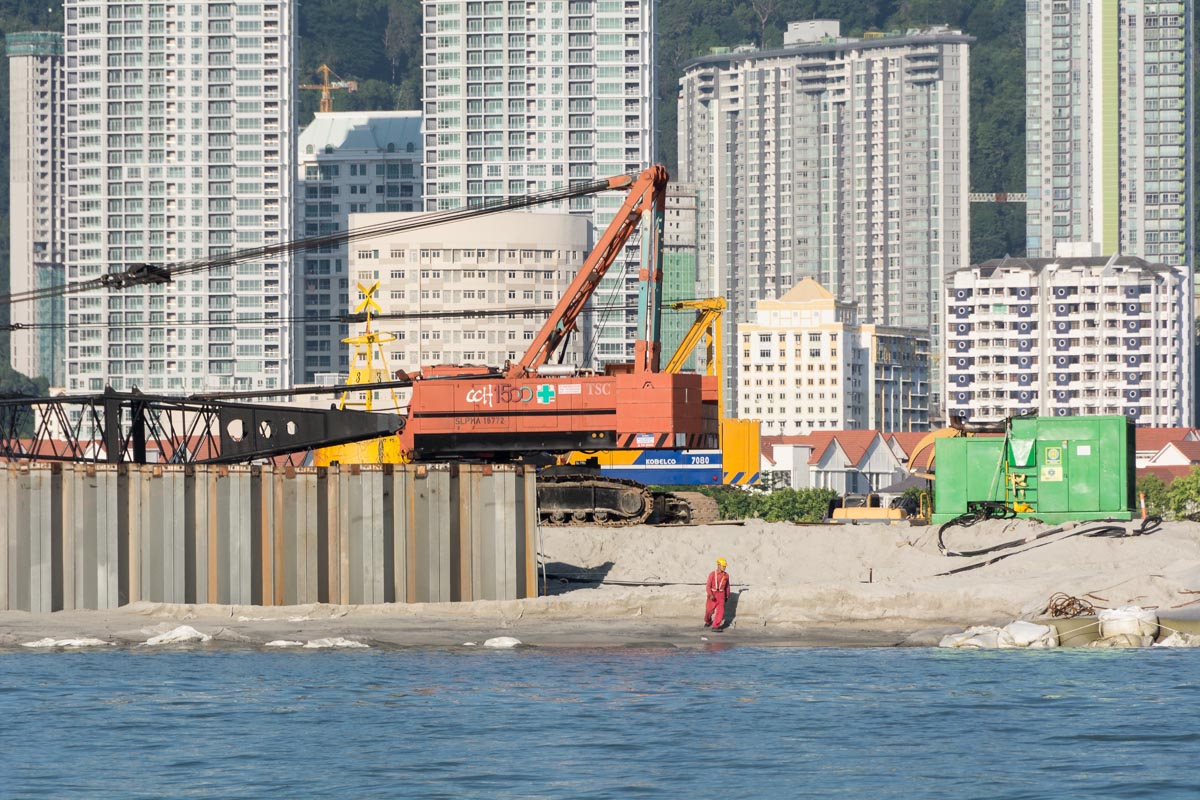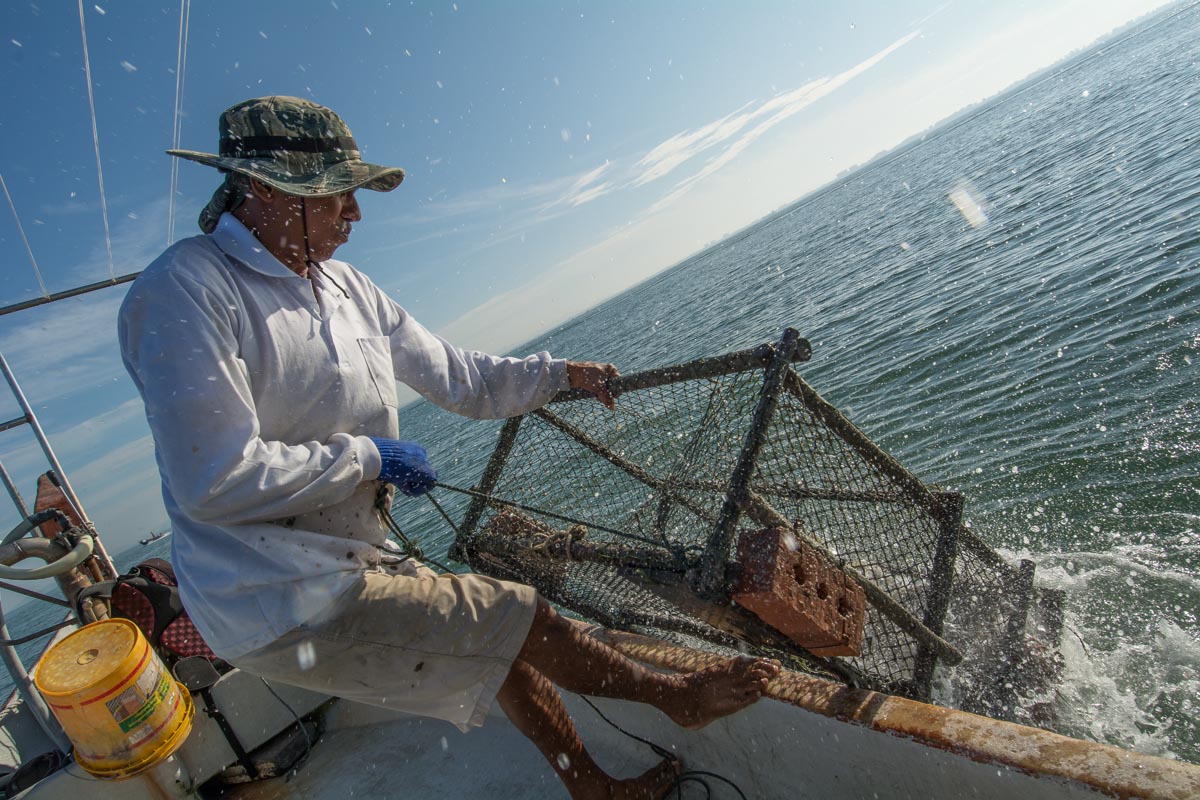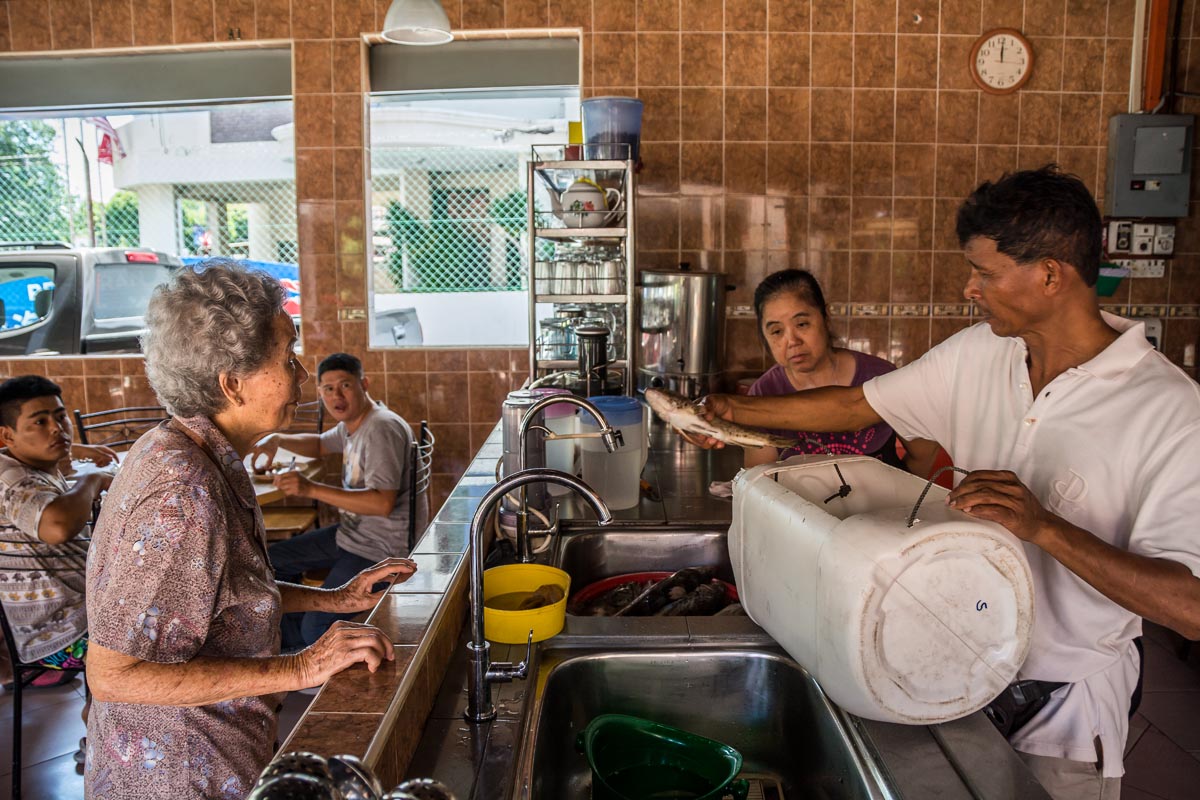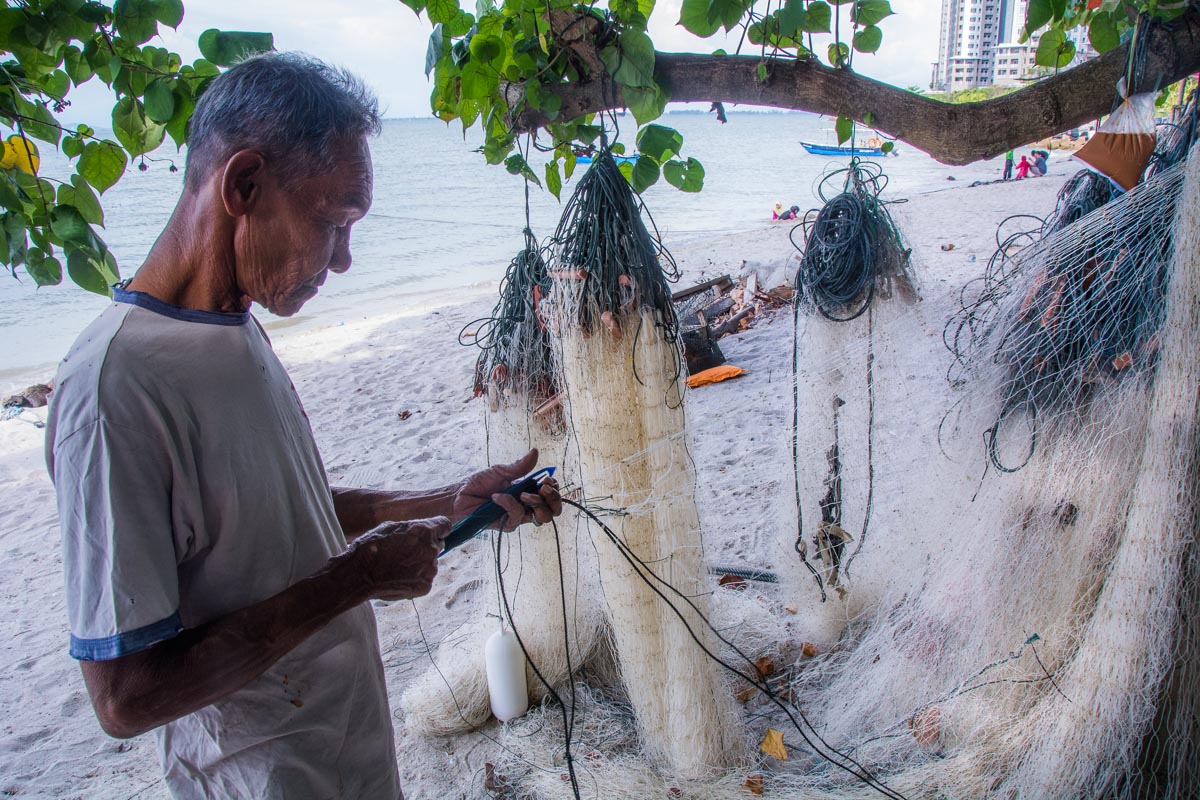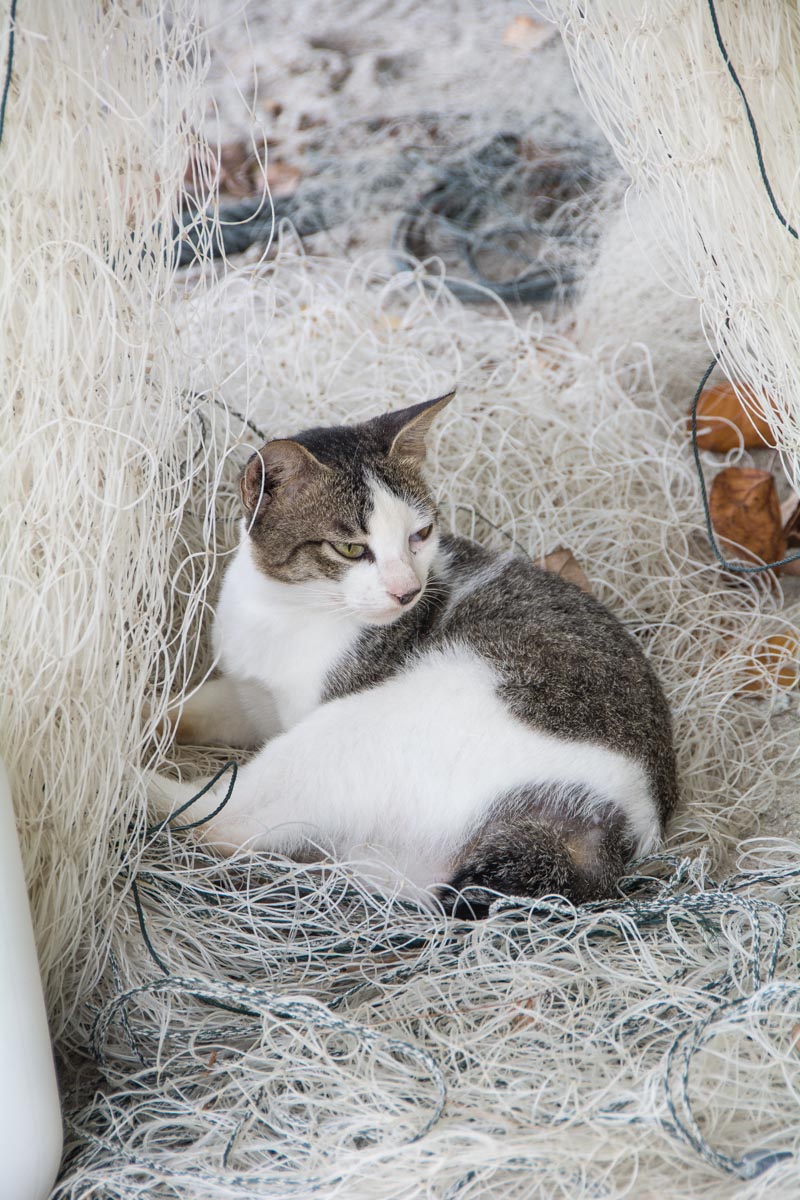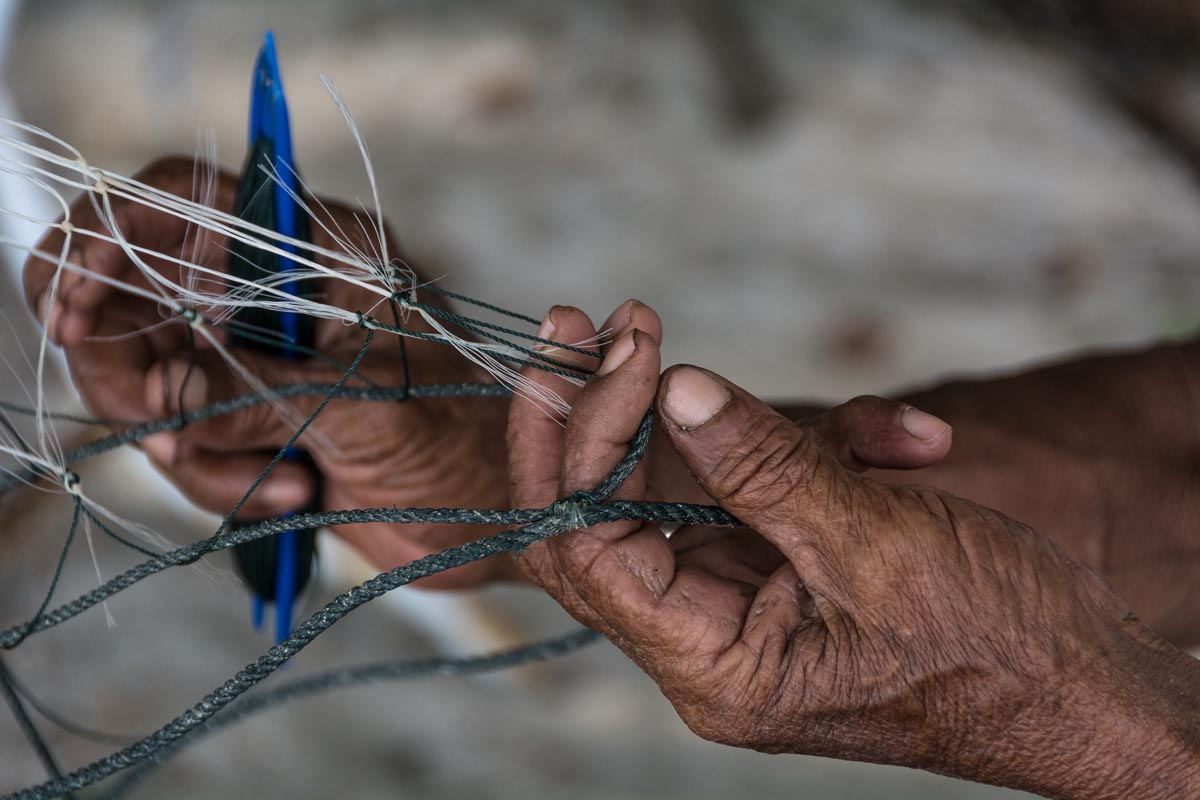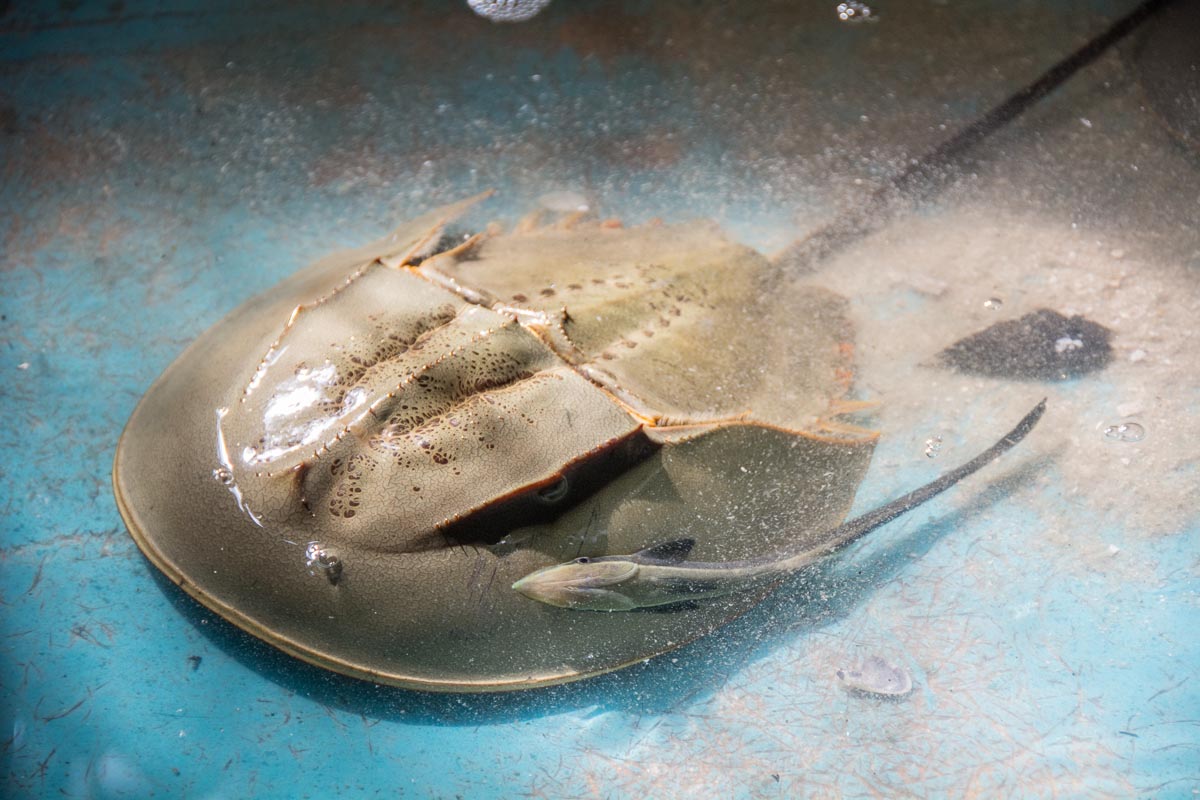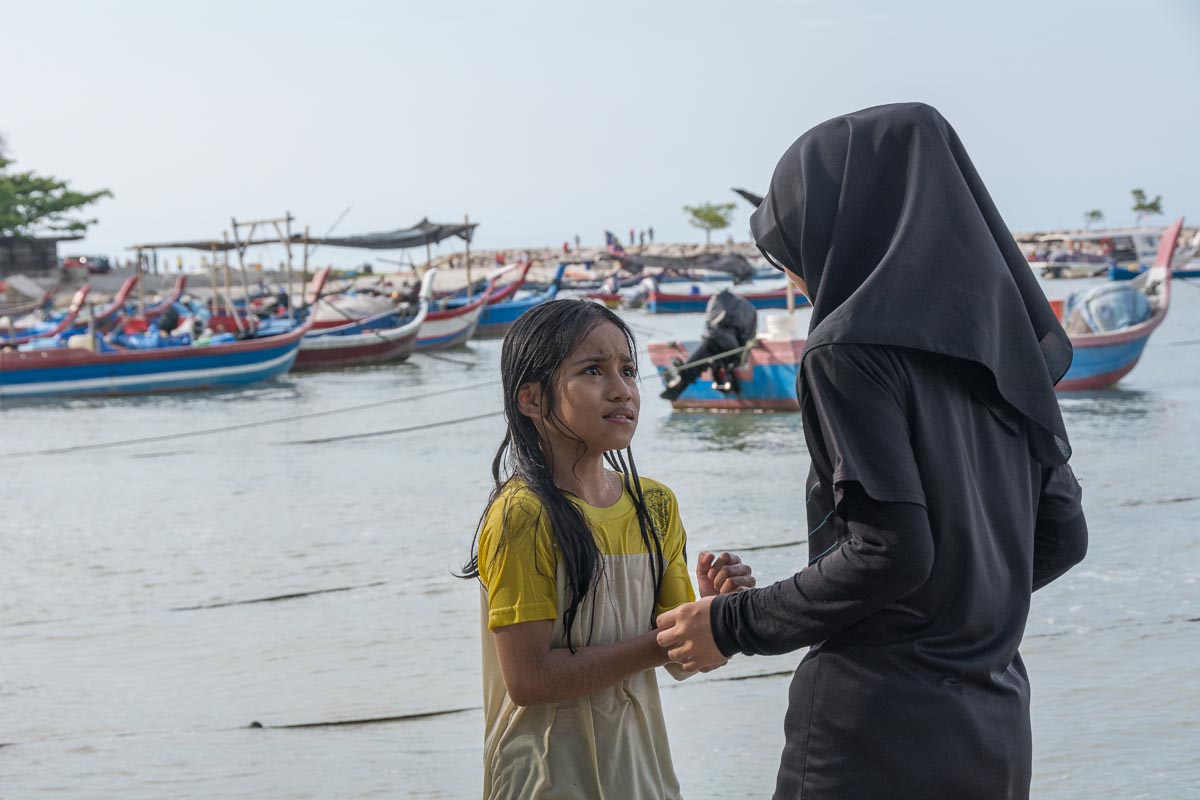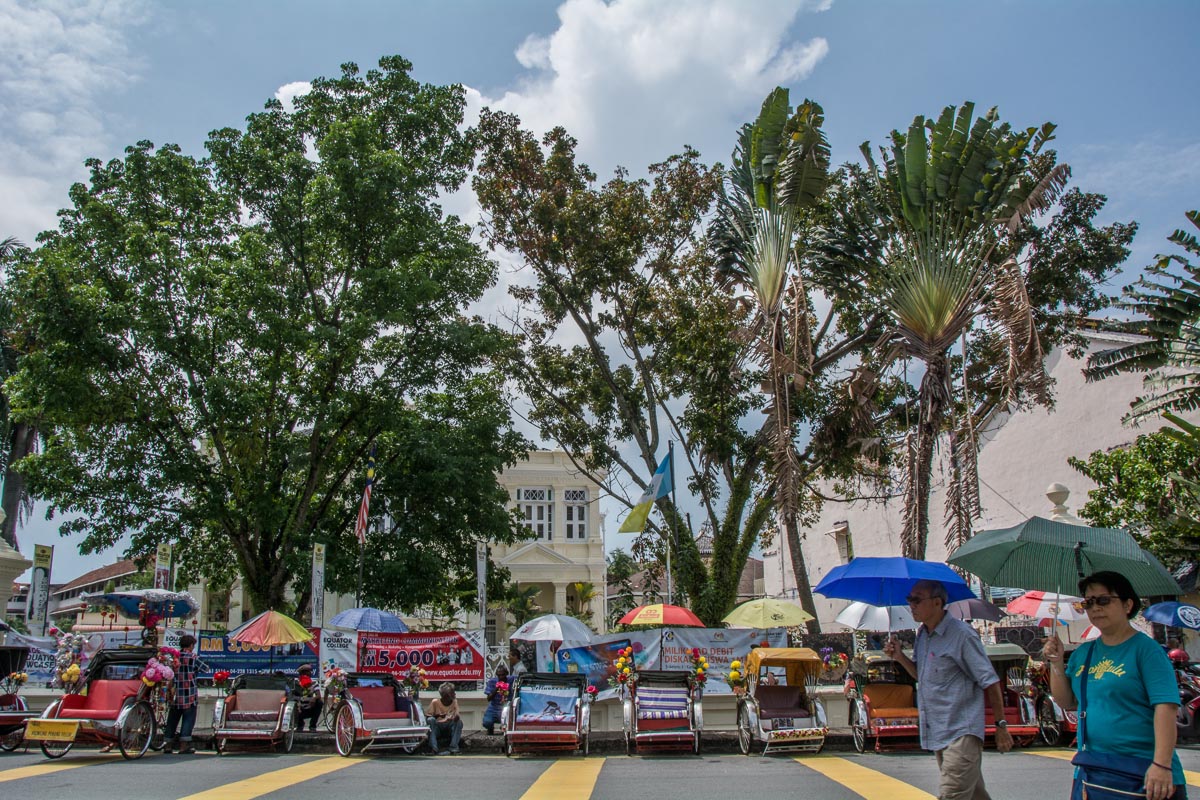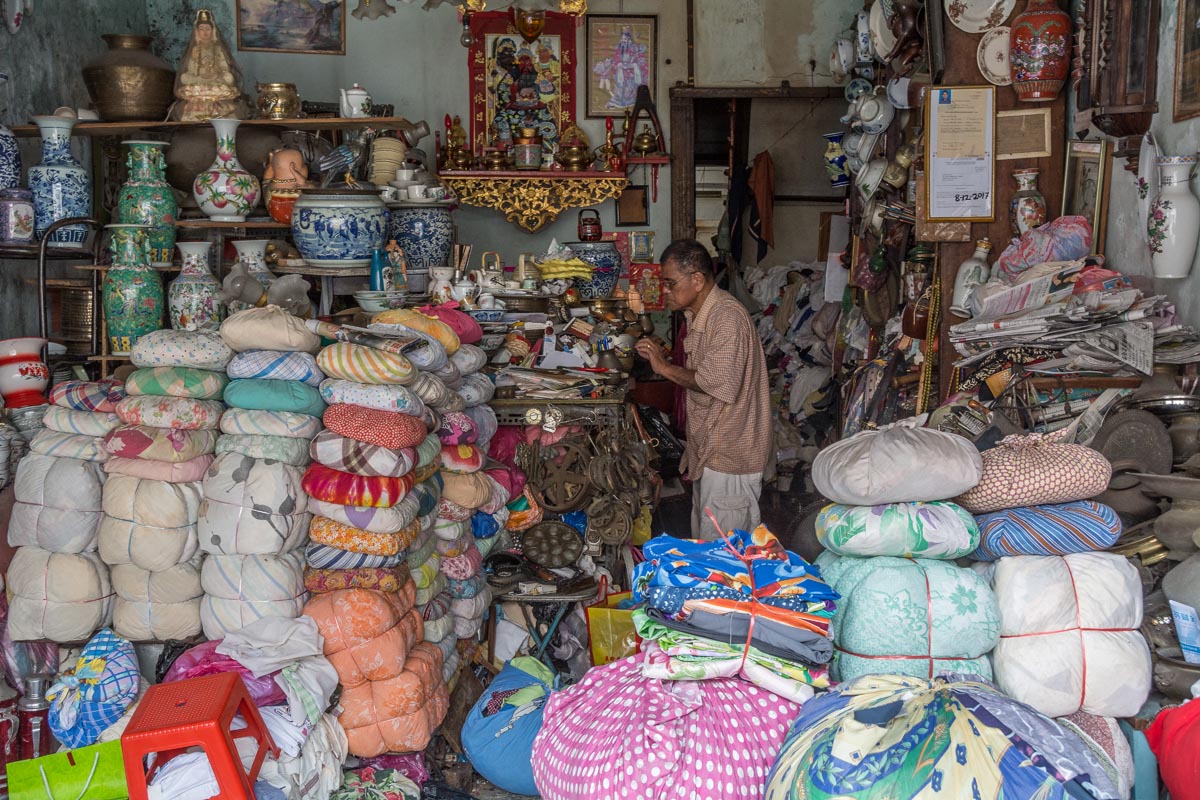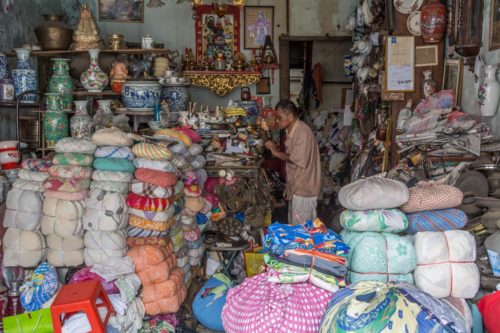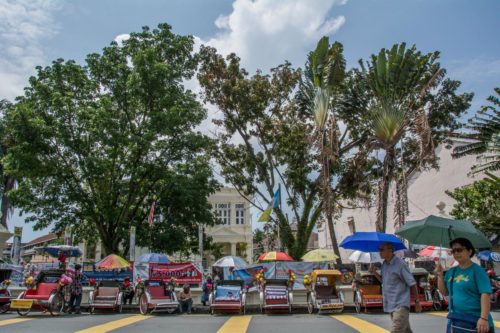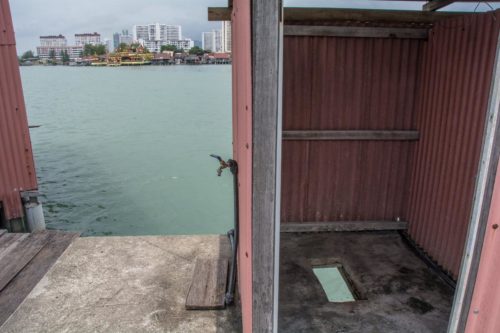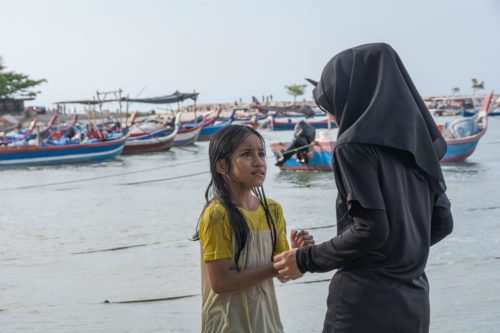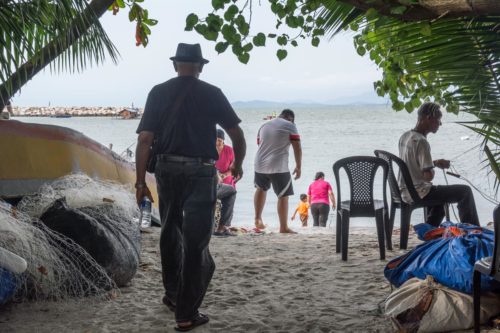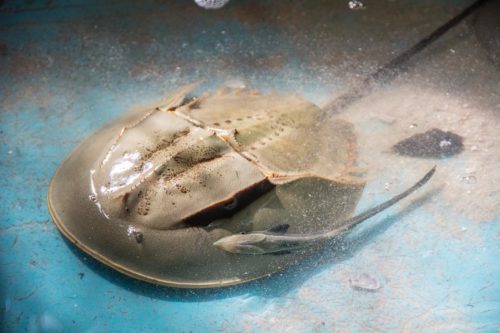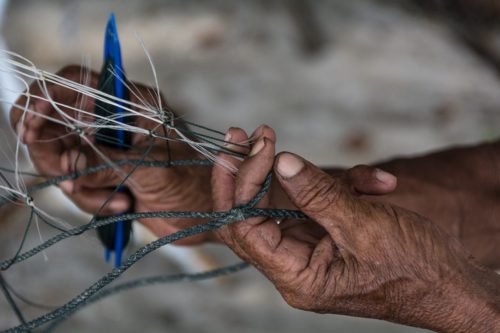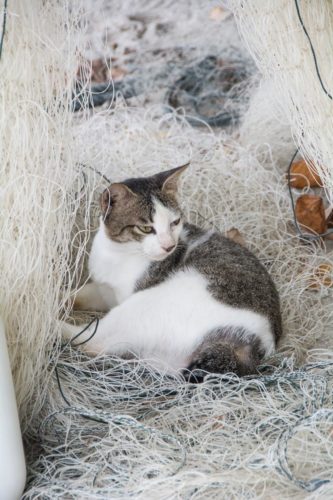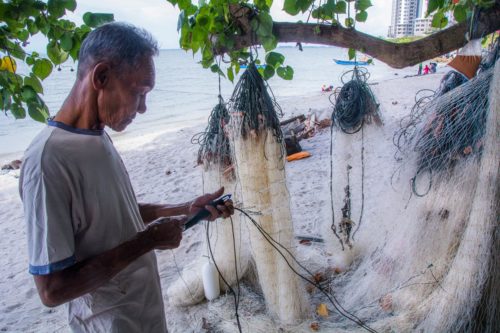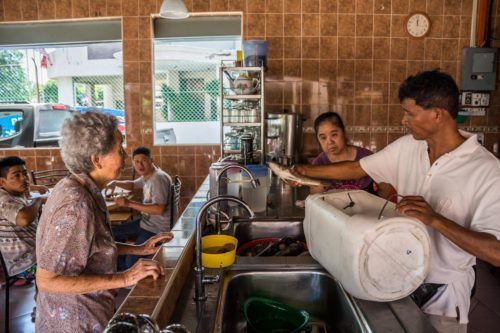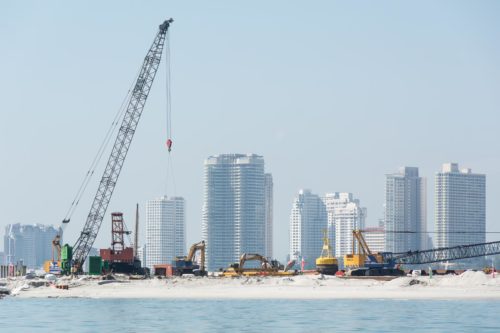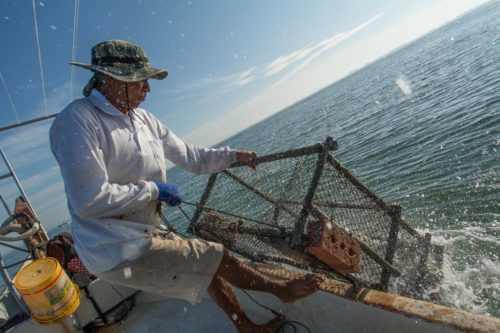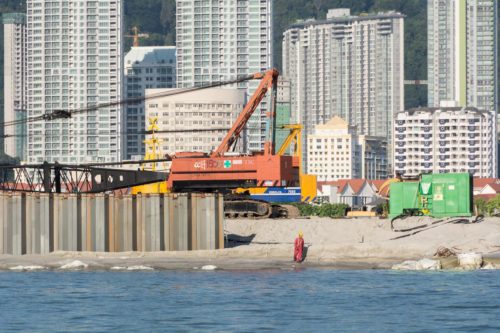-
- Driven by high demand for housing, developers in Malaysia’s Penang Island are artificially expanding the coastline and planning to construct new islands.
- Local fishers say building works have already damaged their livelihoods, and fear further construction will destroy their fishing grounds.
- Mangroves and endangered bird species are also threatened, and the mining and transport of construction materials could spread adverse environmental impacts beyond just Penang.
PENANG, Malaysia — Fisherman Liew Hock Choon, 50, cut the outboard engine and explained that we have arrived at the position of one of his fish traps. “No GPS,” he said.
Using a method called triangulation, his keen eyes pinpointed natural markers on the shoreline and used these bearings to locate his traps with incredible accuracy. With an anchor thrown down, he snagged his trap and hauled it up. The deck was soon awash with flapping fish. These are grouper — prized in the restaurants of Penang and beyond, they fetch a premium price and can only be caught with hooks or traps, Liew explained. He said customers travel from as far as Hong Kong to buy these prized delicacies.
“Look at this mud in the traps,” Liew complained as just two of his four traps contained a catch worth keeping. Still, it was a good day under the circumstances. One phone call later and the 11 kilograms (24 pounds) of grouper were snapped up by a restaurant owner eager to purchase them for over 500 ringgit ($113). They were still alive when Liew delivered and weighed them while hungry customers looked on.
“I know this area very well because in my school days I followed one of the fishermen,” said Liew, from Tanjung Bungah a village North of Penang Island’s capital Georgetown. Now the days of his fishing grounds are numbered because of a land reclamation project by a local property developer.
“This area is very rich with mud crab, shrimp, snapper, and grouper, but soon it will all be gone,” said Liew.
Published on Mongabay.com
-
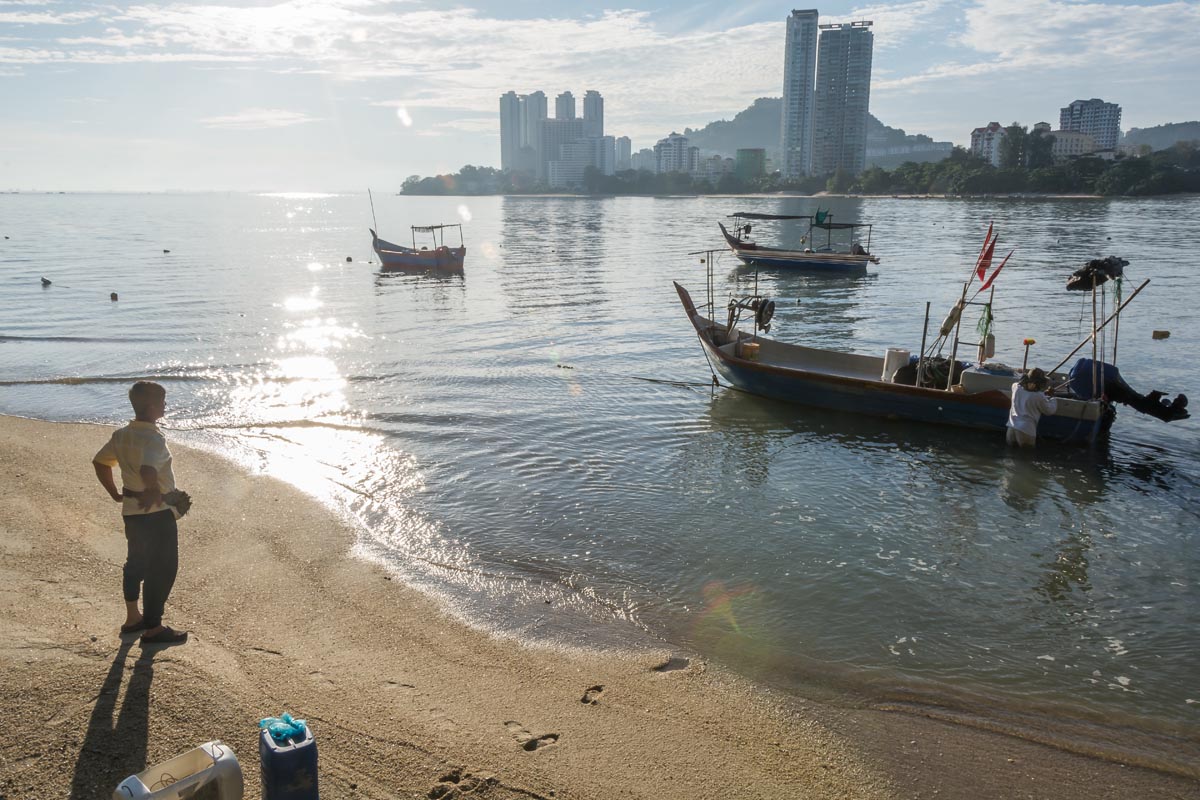 Penang fisherman Mr Liew Hock Choon, 50, is from Tanjung Bungah a village North of Penang Island’s capital Georgetown. Here he prepares his fishing boat to go a collect his fish traps in the reclamation area. Land reclamation for infrastructure projects and property is becoming more widespread in Asia. On...
Penang fisherman Mr Liew Hock Choon, 50, is from Tanjung Bungah a village North of Penang Island’s capital Georgetown. Here he prepares his fishing boat to go a collect his fish traps in the reclamation area. Land reclamation for infrastructure projects and property is becoming more widespread in Asia. On... -
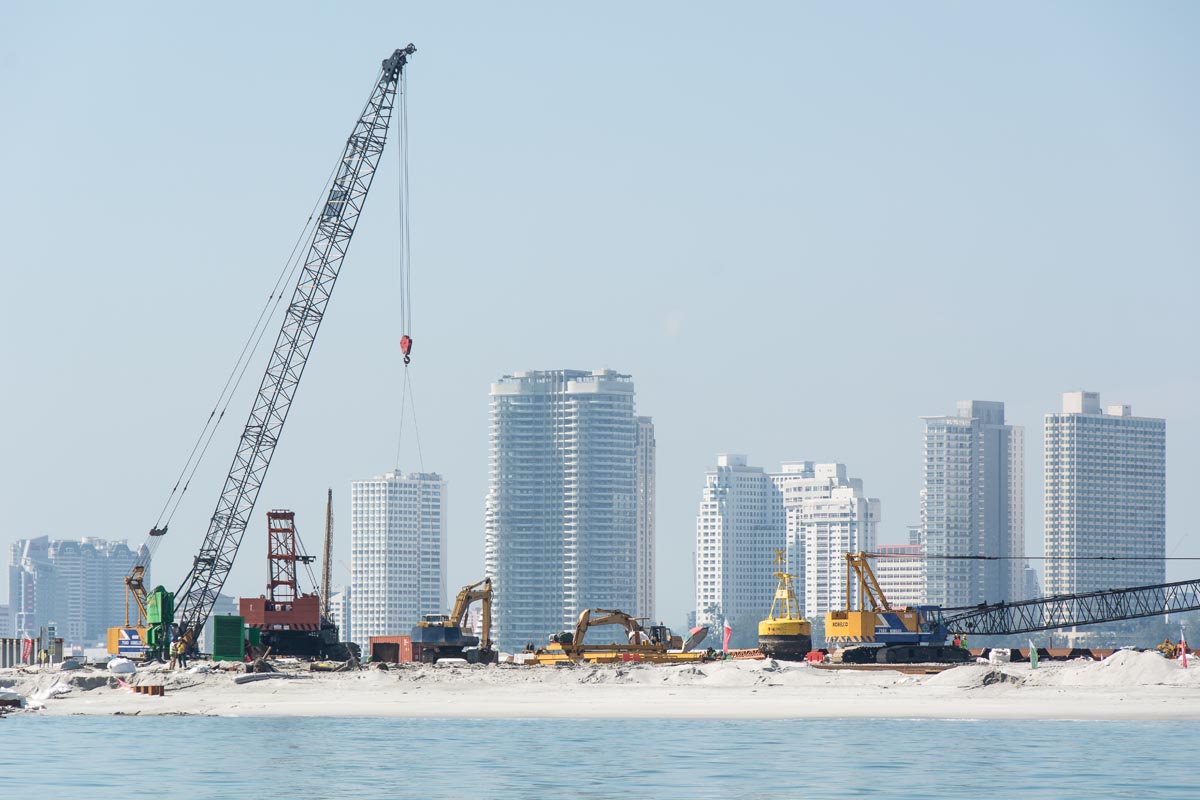 Reclamation building works underway as part of a new island being constructed by the Seri Tanjung Pinang company, a subsidiary of Oriental and Eastern company. Land reclamation for infrastructure projects and property is becoming more widespread in Asia. On Penang island schemes are increasing, especially to build high class housing....
Reclamation building works underway as part of a new island being constructed by the Seri Tanjung Pinang company, a subsidiary of Oriental and Eastern company. Land reclamation for infrastructure projects and property is becoming more widespread in Asia. On Penang island schemes are increasing, especially to build high class housing.... -
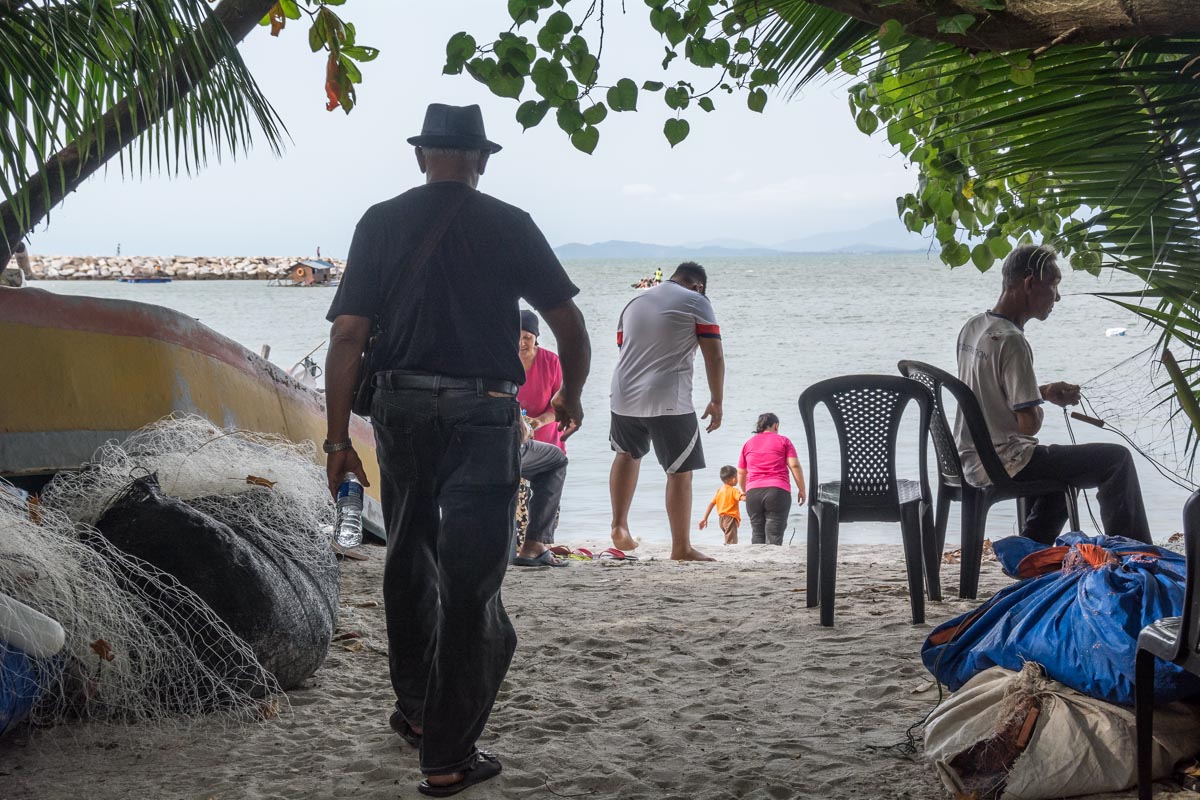 Fisherman Mr Mohd-Ishak (left) is Chairman of the Northern Fishing Community Group of Tanjung Tokong on Penang Island. On Penang island schemes are increasing, especially to build high class housing. The projects require large volumes of building materials, especially sand, and have an impact on the environment especially marine biodiversity....
Fisherman Mr Mohd-Ishak (left) is Chairman of the Northern Fishing Community Group of Tanjung Tokong on Penang Island. On Penang island schemes are increasing, especially to build high class housing. The projects require large volumes of building materials, especially sand, and have an impact on the environment especially marine biodiversity....


